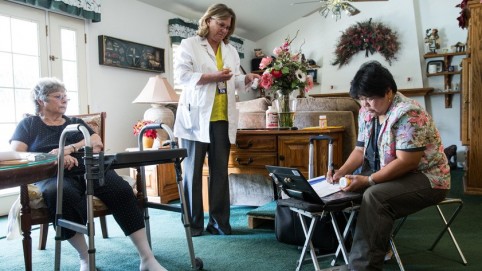Team Helps Patients Heal at Home
- Coming together from various departments (orthopedics, physical therapy, pharmacy) to teach a class for patients about what to expect before, during and after surgery
- Rounding on patients in interdisciplinary teams
- Making discharge calls and leveraging home health nurses as the bridge between hospital and home
What can your team do to better coordinate with other departments to improve patient care? What else could your team do to help everyone adapt to change in the workplace?
***
Act Now—Tools to Help Your Team
Content Goal
Instruct
***
Need an Idea? Borrow One!
Content Goal
Inspire
Nurses, physicians, physical therapists and pharmacists work together to reduce the amount of time patients getting hip and knee replacements spend in the hospital after surgery.
Archived content
Live, non-archived content
TTP Blurb
Instead of patients staying in the hospital two or three days, about 64 percent were discharged within a day of surgery.
Why This Matters
The best place to recover from joint replacement surgery is at home.
Test of Change
Nurses make post-discharge calls to patients and discuss at team huddles
7290
Long Teaser
By working together, this team of nurses, physicians, physical therapists and pharmacists reduced the amount of time patients getting hip and knee replacements spend in the hospital after surgery.
Nav Section
Preview Image

Landing Page Title
Giving Bad Joints the Boot
Topics
Clinical Outcomes
Region
Southern California
Communicator
Sherry Crosby
Editor (if known)
Non-LMP
Keywords
joint replacement surgery
knee replacement
hip replacement
Date of publication
This has been edited
0
Department
Other
Content Type
Team-Tested Practice
Content Goal
Inform
Big Number
64%
Explanation
of patients without complications were discharged within a day of surgery.
